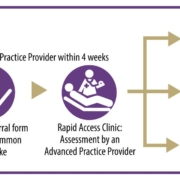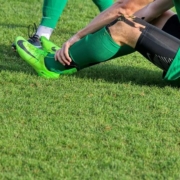The Power of Prevention: Protecting Your Joints for a Lifetime
Your joints are amazing! They allow you to move, bend, and enjoy life to the fullest. But like any complex machine, they need proper care to stay in top shape. Taking steps to protect your joints now can prevent pain and problems later. This article will give you practical tips to keep your joints healthy for a lifetime.
Why is Joint Health So Important?
Healthy joints are essential for everyday activities like walking, climbing stairs, and even holding a pen. When your joints are healthy, you can move freely and comfortably. But when joints are damaged or diseased, simple tasks can become difficult and painful. Preventing joint problems can help you maintain your independence and quality of life as you age.
Protecting Your Joints: A Practical Guide
Maintaining a Healthy Weight:
Less Stress, Less Pain: Extra weight puts extra stress on your joints, especially your knees and hips. Maintaining a healthy weight can significantly reduce this stress and lower your risk of developing osteoarthritis.
How to Manage Weight: A balanced diet and regular exercise are key. Talk to your doctor or a registered dietitian for personalized advice.
Staying Active: The Right Way to Move:
Motion is Lotion: Regular exercise strengthens the muscles that support your joints. Strong muscles act like shock absorbers, protecting your joints from wear and tear.
Choose Joint-Friendly Activities: Low-impact exercises like swimming, walking, and cycling are gentle on your joints. Avoid high-impact activities that involve a lot of jumping or jarring motions if you have existing joint pain.
Listen to Your Body: Pay attention to your body’s signals. If you experience pain during exercise, stop and rest. Don’t push through pain.
Proper Posture and Body Mechanics:
Stand Tall, Sit Straight: Good posture aligns your body correctly, distributing weight evenly across your joints. Poor posture can strain your joints and lead to pain.
Lift with Your Legs: When lifting heavy objects, bend your knees and keep your back straight. This protects your spine and other joints from injury.
Take Breaks: If you sit or stand for long periods, take frequent breaks to move around and stretch.
Nutrition for Healthy Joints:
Calcium and Vitamin D: These nutrients are essential for strong bones, which support your joints. Dairy products, leafy green vegetables, and fortified foods are good sources.
Omega-3 Fatty Acids: These healthy fats have anti-inflammatory properties that can help reduce joint pain and stiffness. Find them in fatty fish like salmon and tuna, as well as flaxseeds and walnuts.
Antioxidants: Colorful fruits and vegetables are packed with antioxidants, which protect your cells from damage and may help reduce inflammation.
Protecting Yourself from Injury:
Warm Up Before Exercise: Preparing your muscles for activity helps prevent strains and sprains, which can indirectly affect your joints.
Use Proper Equipment: Wearing supportive shoes and using appropriate safety gear during sports and other activities can protect your joints from injury.
Know Your Limits: Avoid overexertion and listen to your body’s signals. Pushing yourself too hard can increase your risk of injury.
Managing Existing Joint Conditions:
Work with Your Doctor: If you have arthritis or another joint condition, follow your doctor’s treatment plan. This may include medication, physical therapy, or other interventions.
Stay Active: Even with joint pain, regular exercise is important. Choose activities that are gentle on your joints and work with a physical therapist to develop a safe and effective exercise program.
Manage Pain: Over-the-counter pain relievers can help manage mild to moderate joint pain. Talk to your doctor about other pain management options if needed.
Key Takeaways for Lifelong Joint Health:
Maintain a healthy weight.
Engage in regular, low-impact exercise.
Practice good posture and body mechanics.
Eat a nutritious diet rich in calcium, vitamin D, omega-3s, and antioxidants.
Protect yourself from injury by warming up, using proper equipment, and knowing your limits.
Work with your doctor to manage existing joint conditions.
Further Resources:
The Arthritis Foundation: arthritis.org
* The American Academy of Orthopaedic Surgeons: aaos.org
By following these tips, you can take an active role in protecting your joints and maintaining your mobility for years to come. Remember, prevention is the best medicine!









